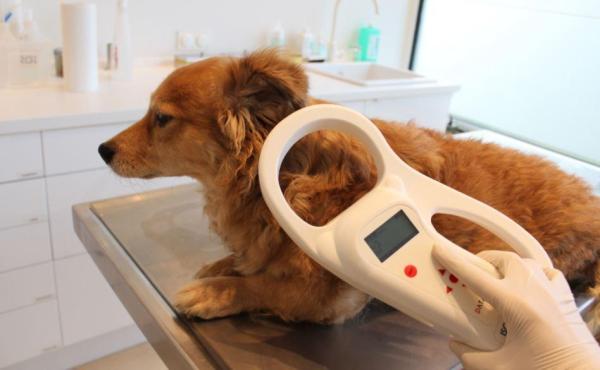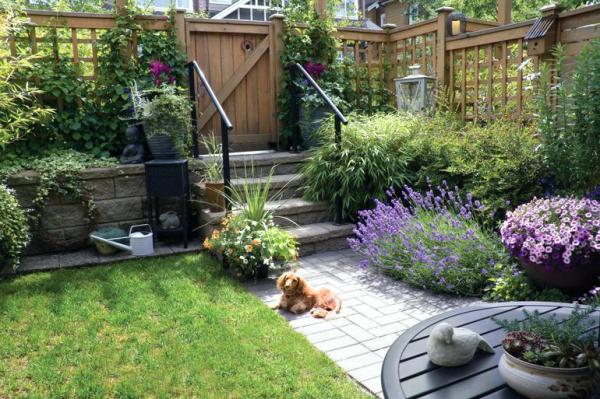How to Prevent Your Dog From Getting Lost?



See files for Dogs
Around 10 million pets go missing in the US annually. Of those, only about 1 in 3 dogs are ever returned to their owners. Not only that, but 15-20% of dogs will run away at least once in their lifetime. Dogs run away for a complex mix of reasons, but it often boils down to instinct, fear, or frustration. Understanding the reasons behind these escapes is key to keeping your dog safe and sound.
Don't let your pup become a statistic. This AnimalWised article explores the most effective tips to prevent your dog from running away.
1. Use identification
Proper identification is essential for a quick reunion if your dog ever gets lost. Popular methods include:
Microchip
A microchip, no larger than a grain of rice, offers a permanent and reliable method for identifying lost pets. Implanted under the skin by a veterinarian during a routine procedure, the microchip contains a unique identification code. This code can be read by animal shelters and veterinary clinics using a special scanner. The code links to a national pet database that stores the owner's contact information.
Microchipping is mandatory in many countries, and pet owners should ensure their dog's chip is registered with the appropriate database and that their contact information remains current. Updating this information, particularly after moving or changing phone numbers, is crucial for a successful reunion if a pet goes missing.
Identification tags
For quick and easy pet identification, ID tags are a popular choice. Typically made of colorful and durable materials, these tags display basic information like the dog's name, owner's name, and a contact phone number. This allows anyone who finds a lost dog to easily reach the owner.
For a more comprehensive approach, consider QR code tags. These tags store additional information beyond basic contact details. This can include vital details like your dog's medical history and any medication needs. Anyone with a smartphone equipped with a QR code reader app can access this information, potentially expediting a safe return for your pet if they become lost.

2. Early socialization
During the socialization window (typically between 3-12 weeks), puppies are exposed to various sights, sounds, people, and other dogs in a safe and positive way. This helps them develop confidence and reduces fearfulness of unfamiliar situations. Keep in mind that a fearful dog is more likely to bolt due to unexpected noises, people, or environments. Furthermore, through proper socialization, dogs learn appropriate behavior with other dogs and people. This reduces the urge to chase after unfamiliar animals or people outside the home, which could lead them astray.
Socialization training also incorporates leash training, teaching puppies to walk calmly alongside their owner. This makes walks more enjoyable for both dog and owner, reducing the likelihood of the dog pulling or lunging towards distractions, which could lead to escape attempts.
Socialization also provides mental stimulation and prevents boredom, which can be a major factor in escape attempts. Engaging with new environments and interacting with others keeps dogs mentally stimulated and less likely to resort to destructive behaviors, including digging under fences or trying to escape through doors.
Finally, it is important to note that positive socialization experiences help build trust and a strong bond between dog and owner. A dog that feels secure and loved is less likely to feel the need to run away and explore on their own.
Wondering how socialization benefits your dog? Dive deeper into its importance and practical tips in this article.
3. Secure your property
Does your dog love spending time outdoors? A secure yard is your first line of defense in preventing your dog from running away.
Install a sturdy perimeter fence made of a resistant material appropriate for your dog's size and jumping ability. Consider adding a concrete or brick base to prevent digging escapes. Ensure the fence posts are securely anchored in the ground and the fence panels are firmly attached. Inspect the fence regularly for any loose boards, damaged sections, or weak points that your dog could exploit.
Ensure all gates close and latch securely. Consider adding a secondary latch or carabiner for extra security. For gates that swing open outwards, install a block or weight to prevent your dog from pushing the gate open. If you identify any weaknesses in your fence, take prompt action to reinforce them.
If, on the other hand, you live in an apartment and do not have a backyard, double-check that all doors and windows close and lock securely. Pay close attention to patio doors and balcony access points. Consider adding childproof locks on lower windows for extra security.
Finally, in both cases you can also combat escape attempts and anxiety by providing a designated "safe spot" like a crate or comfy bed. This creates a haven for your dog. Train them to relax there using calming commands and rewards. Gradually increase absence durations while they're in the space, conditioning them to feel secure during your departures.

4. Supervise outdoor time
Always keep a watchful eye on your dog when they're outdoors, especially in unfenced areas. This allows for immediate intervention if they display any signs of wanting to bolt, like excessive sniffing near exits, digging at the ground, or fixated attention on distractions beyond your control.
Always use a high-quality collar or harness and leash that suits your dog's age, size, and activity level. In urban areas, keep your dog on a leash at all times. Even well-trained dogs can be startled by unexpected noises or sights and bolt.
In controlled, quiet, and sparsely populated rural areas, you might consider letting your dog off-leash. For socialization and exercise, consider designated dog parks with secure fencing. Also, it might be beneficial to regularly practice the "come" command in a safe outdoor environment. Rewarding them for returning to you promptly reinforces the behavior and increases your ability to call them back if they become distracted.
Always use a high-quality car restraint system, such as a crate, harness, or carrier, that's appropriate for your dog's size. Acclimate your puppy to car rides from a young age. This helps them travel calmly and reduces the risk of them jumping out excitedly when you open the car door.
Be especially vigilant when approaching exits like park gates or trail openings. Keep your dog close by your side and leash them securely before exiting the area.
Looking for the perfect walking routine? We explore how often to walk your dog in this other article.
5. Neutering
Neutering your dog offers numerous benefits for both their health and behavior. It is well known that it can reduce the risk of certain cancers and infections, but neutering your male dog significantly reduces escape attempts by curbing their testosterone-fueled urges to roaming and mark territory.
This calmer demeanor makes them less likely to bolt due to distractions and allows for better focus during training, improving leash control and overall escape prevention.
Female dogs in heat may also try to escape to find a mate, potentially leading to unwanted pregnancies. Neutering can help prevent these issues, making your dog a more enjoyable companion.
If you're considering neutering your dog, talk to your veterinarian. They can discuss the specific benefits for your pet and answer any questions you may have.
Does neutering impact a dog's lifespan? Find the answer and explore the potential benefits in this other article.

6. Provide sufficient exercise
A bored dog is a dog with pent-up energy. This frustration can lead to destructive behaviors, including digging under fences or attempting to escape through doors. Regular exercise helps burn off this energy, keeping your dog mentally and physically stimulated, and less likely to resort to escape attempts.
Exercise is a natural stress reliever for dogs. Physical activity releases endorphins, promoting a sense of calmness and well-being. A relaxed and content dog is less likely to feel the need to escape and explore on their own.
Not only that, but regular exercise builds your dog's stamina. This can be particularly helpful if your dog has a high prey drive or tends to chase after distractions. A tired dog is less likely to have the energy or motivation to pursue escape attempts.
Finally, let us not forget that exercise time provides valuable bonding opportunities between you and your dog. This strengthens your relationship and fosters trust. A dog that feels secure and loved is less likely to feel the need to run away and explore on their own.
Is your dog acting out? This other article explores the signs of boredom in dogs and how to keep them happy.
If you want to read similar articles to How to Prevent Your Dog From Getting Lost?, we recommend you visit our Facts about the animal kingdom category.








